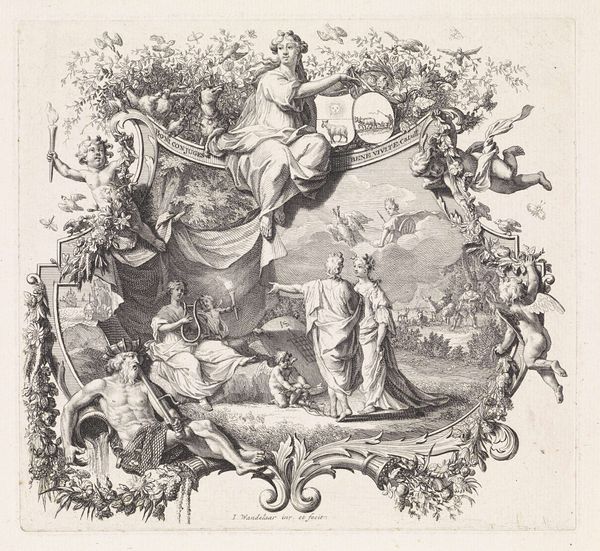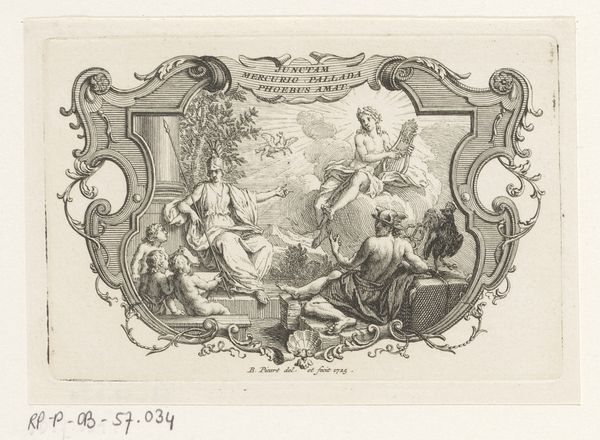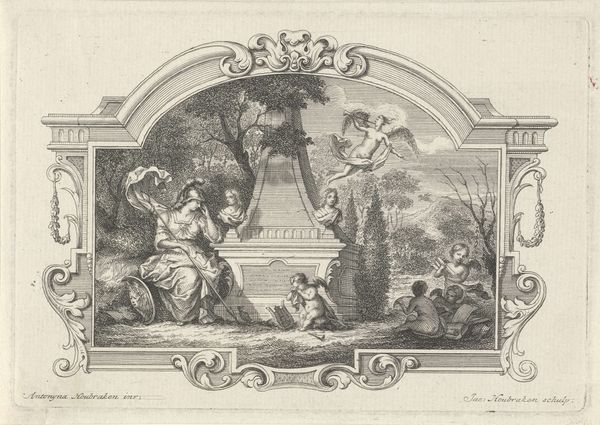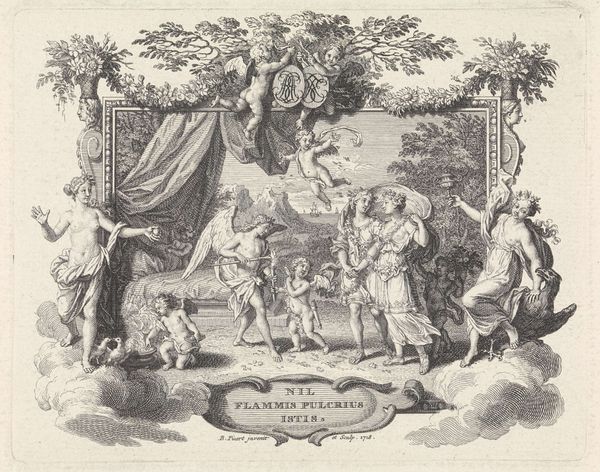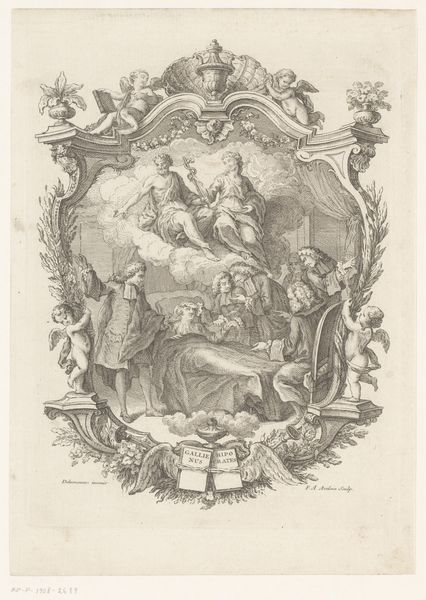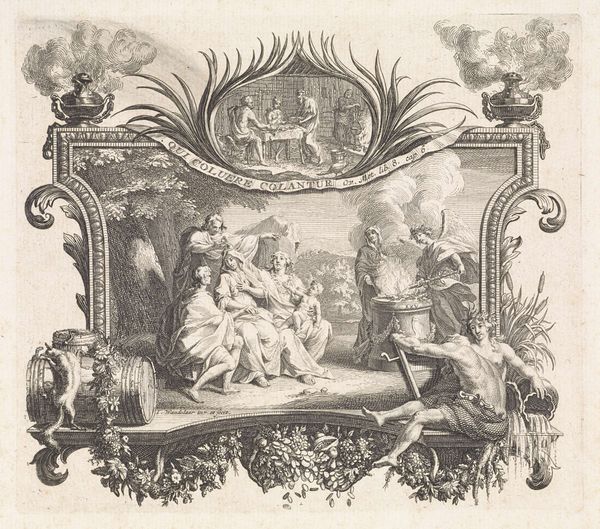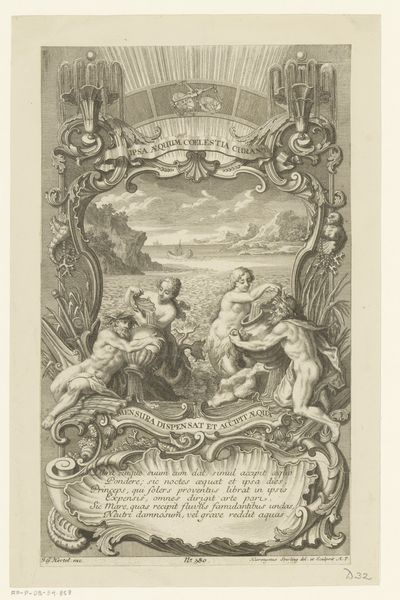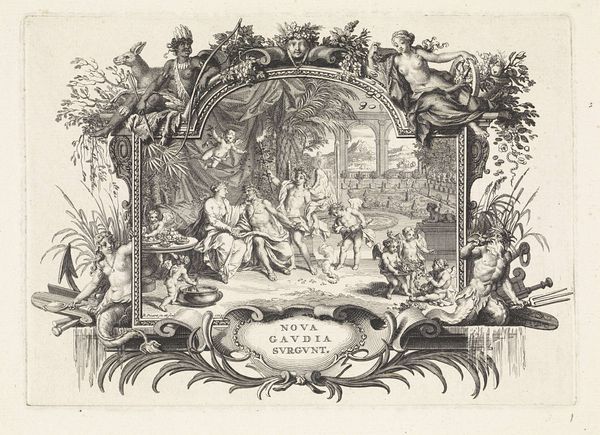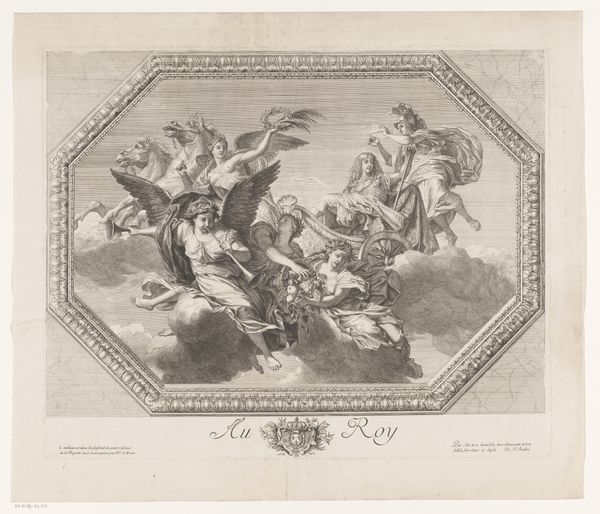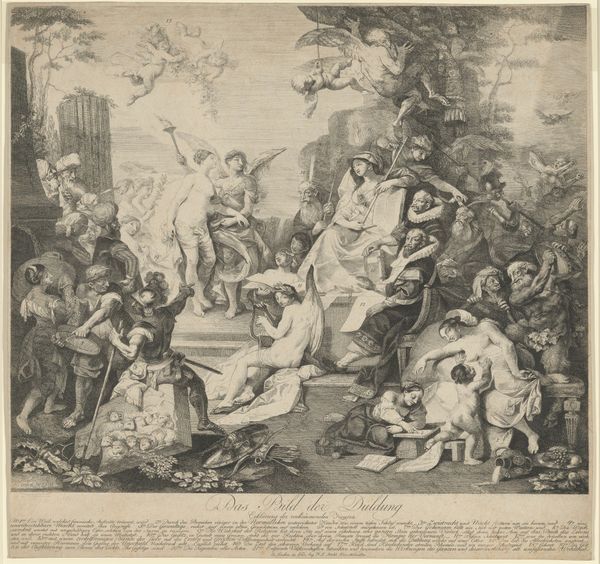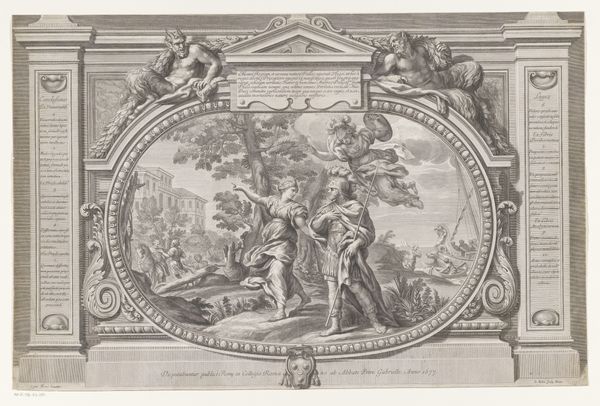
Allegorische voorstelling ter gelegenheid van het huwelijk van Louis Fabricius Dubourg en zijn vrouw 1729
0:00
0:00
bernardpicart
Rijksmuseum
engraving
#
portrait
#
allegory
#
baroque
#
pen drawing
#
classical-realism
#
figuration
#
line
#
history-painting
#
engraving
Dimensions: height 118 mm, width 154 mm
Copyright: Rijks Museum: Open Domain
Bernard Picart created this print in the Netherlands, around 1709, as an allegorical representation of the marriage of Louis Fabricius Dubourg. But why represent a wedding in this way? We see classical figures like Mars and putti, cherubic infants that evoke the playful and mischievous nature of love. The Latin inscription, “Amori Cedant Omnia,” translates to “Let All Yield to Love,” suggesting love's power over everything. The image reflects the cultural values of the time. In the Dutch Republic, marriage was a vital social institution and an important means of consolidating wealth and status. The prevalence of allegory reflected a society steeped in classical learning. To understand Picart's visual language, scholars consult emblem books, iconographical guides, and histories of social customs. These can offer insights into the nuanced meanings that would have been readily apparent to Picart's contemporaries. The enduring appeal of art lies in its capacity to reflect and shape the values of its time.
Comments
No comments
Be the first to comment and join the conversation on the ultimate creative platform.
